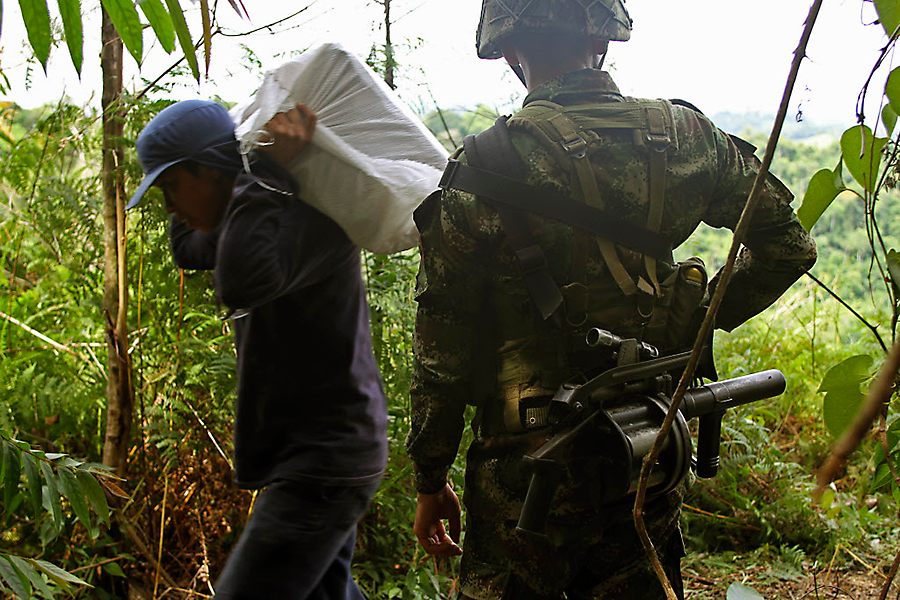Colombia seizes 8.8 tons of cocaine, one of largest busts ever
Loading...
More than 17,500 pounds of cocaine valued at $240 million.
That's how much of the narcotic Colombian national police seized near the Panama border in what President Juan Manual Santos says is one of the largest busts in the country's history.
Though the seizure is likely a blow to the Clan Usuga drug trafficking and neo-paramilitary gang authorities say the contraband belongs to, it also lays bare that Colombia's drug war isn't over.
And yet, the country – once dubbed the cocaine capital of the world – has come a long way in the past 15 years, as the Monitor's Howard LaFranchi reported in March.
The country was considered by many a failed state. It was awash in the world's worst violence, mired in the continent's oldest guerrilla war that had cost nearly a quarter-million Colombian lives, with weak institutions that reached only parts of the country and were prone to the control and corruption of drug cartels or right-wing paramilitary groups.
Under Plan Colombia, a nation-building partnership between it and the United States that started under former President Bill Clinton, violence there has been reduced significantly, the Monitor reported:
Killings, kidnappings, and disappearances are all down sharply: Murders, which totaled 26,250 in 2001, fell by more than half to 12,750 in 2014. Bombings, field battles, and massacres are no longer daily front-page fare. With security reestablished in many places, notably cities such as the capital, Bogotá, and the Millennial-cool Medellín, private investment is flooding in and the middle class has expanded.
Perhaps most important, the central government is no longer absent from whole sections of the country, and no longer leaving a vacuum to be filled by crime gangs and other malfeasant actors.
Clan Usuga, which the 8.8 tons of cocaine are said to belong to, is a holdout. The US Justice Department calls Clan Usuga Colombia's "largest and most influential" drug trafficking group. In fact, the United States has offered a $5 million reward for the capture of Clan Usuga’s leaders, Dario "Otoniel" Usuga. The State Department claims he is one of the leaders of Los Urabenos it describes as "a heavily armed, extremely violent criminal organization comprised of former members of terrorist organizations that did not demobilize as part of the Colombian government’s justice and peace process."
Clan Usuga and other Colombian crime organizations continue to produce a substantial amount of the narcotic, although much of it was seized in 2015. Colombia produces about 442 tonnes of cocaine annually, according to the United Nations. Authorities there seized 252 tonnes of the narcotic in 2015.
And despite the success of Plan Colombia in certain regards, cocaine production in parts of the country is on the rise, as LaFranchi reported:
[Plan Colombia] was initially conceived largely as an anti-narcotics collaboration, and that part of the plan was hardly a rousing success. Colombia's drug trade was splintered but far from destroyed, while the drug cartels' logistical control of the trade simply shifted to Mexico. And coca production, which was reduced for a time largely through a controversial US-supported aerial eradication program, has surged back in some regions in recent years.
Still, the initiative has transformed millions of lives and helped bring state institutions – a professionalized National Police force, judicial services, and social programs such as rural development – to large swaths of formerly lawless territory.
Not to mention, LaFranchi added, it is helping farmers feed the world's taste for chocolate, assisting them turn to growing cacao rather than coca – the basic ingredient of cocaine.
This report contains material from Reuters.





